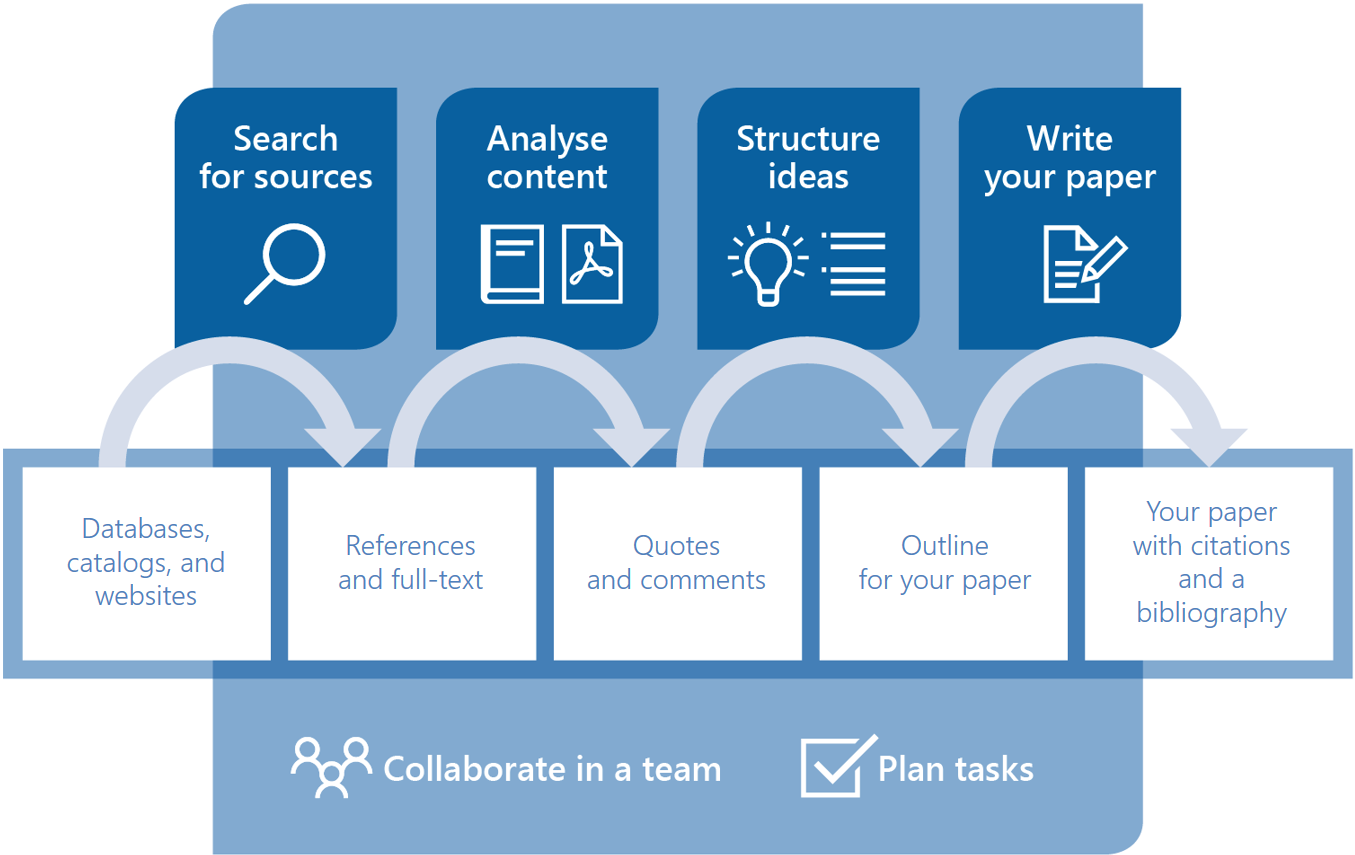
Setting Up a Paper-Writing Workflow
Large writing projects can seem overwhelming. There’s so much to do that it can be hard to know where to begin.
One thing that can help is setting up a workflow for yourself. Whether you’re writing your first research paper or already have many behind you, it always pays to take a look at your process and see if there are any areas you can improve. At the beginning of a project, take a half hour and consider the following:
- Know your goalStudents sometimes fail to realize what their professors expect on a particular assignment. Reread your handouts on the paper requirements so you know what kind of topic you are expected to pick, the length of the paper, and how many sources should be included.
More seasoned researchers are not exempt from this step!
Projects should always be started with at least an idea of where the work could be published later on. If you are starting an article, closely read your potential journal’s scope sections to make sure your work will be a good fit.
- Have a road mapFamiliarize yourself with the steps in the research process for your particular discipline, what each step consists of, and what the expectations are at your academic level. Visual aids can be helpful. For example, a typical paper-writing process might look something like this:

Do note, however, that the research process is iterative and not linear even if it’s depicted that way above. You’ll have false starts and have to loop back, even as you’re nearing the end of your project.
- Plan your timeConsider the amount of time you have and then plan back from there.
Enter important dates in a calendar that you can access on the go. Use a planner or your smartphone.
It can be helpful to schedule regular, individual work sessions as well. Look at your schedule often and revise as necessary. It’s not about strictly adhering to dates but rather about improving the likelihood that you’ll be able to get work done through awareness of the time restraints and other commitments you have.
- Develop a note-taking strategyHave a plan for how you will keep track of your source information and organize your notes on your reading. Consider which tools you can use to help you manage your sources, your thoughts on what you are reading, and the ideas you want to include.
These don’t have to be high-tech: your tools may consist of index cards, a highlighter, a pen, and sticky notes. But you might also want to consider software that is available. Reference management software will help you keep track of your sources and format your paper in a citation style, while outlining programs help you organize your thoughts. Citavi is a program that can help you do both, and it‘s free for projects containing up to 100 sources.
Regardless of what you choose, by getting your sources and ideas organized, you’ll be able to write more efficiently down the line, and you won’t end up staring at a blank page in terror the night before your paper is due.
- Start, even if you don’t feel readyOnce you have a rudimentary plan in place, don’t spend too much more time refining it right at the beginning. Even the perfect workflow won’t help if you don’t actually do anything. As you go along, you’ll revise your process and adjust your schedule accordingly.
Do you have any tips for creating a writing project workflow?
What rituals do you follow or what plans do you make when starting a new paper, and do they work? We’d love to hear some of your suggestions on our Facebook page!
About Jennifer Schultz

Jennifer Schultz is the sole American team member at Citavi, but her colleagues don’t hold that against her (usually). Supporting research interests her so much that she got a degree in it, but she also likes learning difficult languages, being out in nature, and having her nose in a book.
